Varieties of construction helmets and tips for choosing them
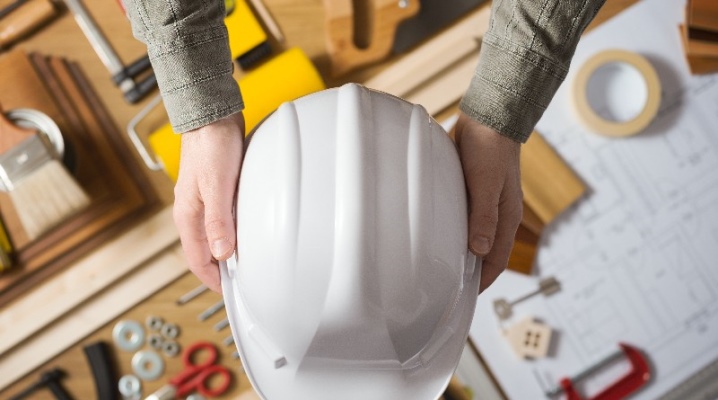
Many people know what a construction helmet is. However, it is also known that they come in different colors, shapes and sizes. Units are not familiar with the PPE attribute. Helmets cannot be dispensed with when it comes to the possible risks of injury or danger to life.
It is worth taking a closer look at what the color of the helmet affects and how to choose the right personal protective equipment for working on the site.
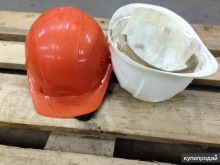


Norms and standards
There are separate requirements and standards for the protection of the builder's head. Materials, properties, and methods of testing protective products are spelled out in specialized documents.
GOST
Correct manufacture and operation of helmets is regulated by:
- GOST EN 397-2012 - it spelled out a system of standards for ensuring occupational safety;
- GOST 14.087-84 - talks about the technical conditions for the operation of construction helmets;
- GOST 12.4.026-2015 - gives a characteristic of colors and markings.
The latter is considered the newest among those listed.
SNiP
Requirements for the use of this product are spelled out not only in GOSTs. You can also get acquainted with them in SNiP 12-02-2001. The document spelled out key safety rules in the construction sector.
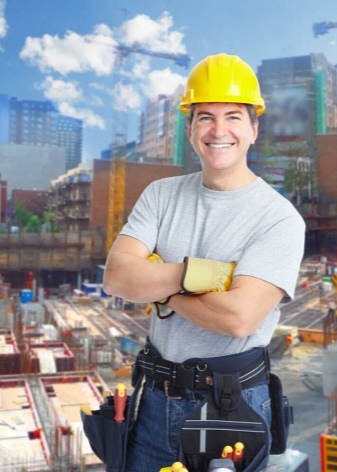
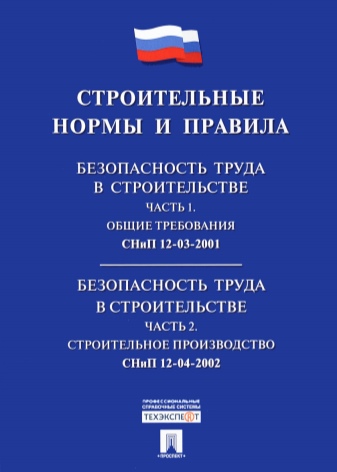
Views
The division of construction helmets is based on two criteria.
- Colour. According to this parameter, hats are allocated for workers, representatives of the management of the facility, and visitors to the enterprise.
- Purpose. Depending on this parameter, the product can have a different shape, size, equipment. Also, helmets can be divided into winter and summer options.
American headwear is made primarily of plastic, polyethylene, and polyester. Also, in the manufacturing process, polycarbonate with additional reinforcement can be used. The listed materials are characterized by shock resistance and improved performance characteristics.
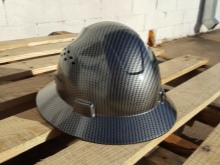
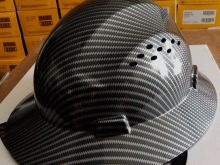
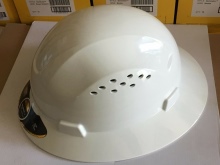
Helmets can counter the following factors.
- Mechanical. Head hats soften impacts, preventing serious injury. They are made of durable materials.
- Temperature. For the manufacture of helmets, materials are used that are resistant to high temperatures. They do not catch fire and reliably protect the head from burns.
- Chemical. For the manufacture of some helmets, special materials are used that are not afraid of the effects of chemically active substances. They also do not deform under hot metals.
- Weather. The products allow you to organize uninterrupted operation at the facility even on a sultry day, even in rain, slush or snow.
When choosing a suitable cowboy hat, a builder should first decide on the purpose of PPE. This will help to take into account the material from which the product will be made, as well as a number of additional characteristics in the form of a device and the presence of additional functions.
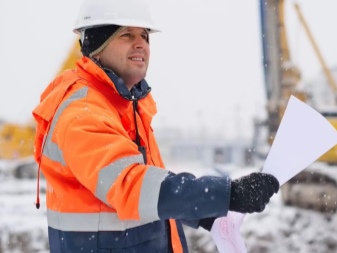
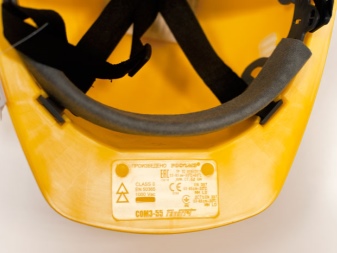
Colors
The type of helmet is determined by color according to GOST 12.4.087-84. According to this document, there are several shades of personal protective equipment.
Red
Designed for foremen, engineers, as well as chief mechanics and power engineers of the facility. Such helmets are additionally provided to the visitors of the facility.

Yellow
They are used by ordinary workers, as well as service personnel. In addition to this category are orange hats.
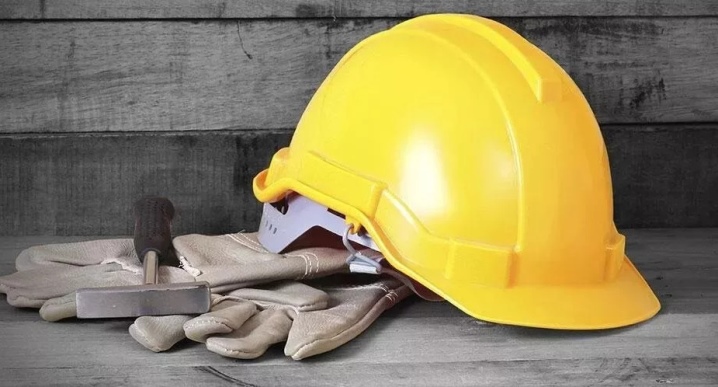
White
They should be worn by company or business leaders. Also, such helmets are found on the heads of labor safety inspectors and security officials. Often, white protective headgear is used by engineers.
Thus, by the color of personal protective equipment, it is easy to identify the head of the site or a partner in the workshop. This is especially true for those who work at height.

Marking
The state standards indicate the features of the marking of helmets. The content of the marking is located on the inside of the visor. It includes:
- name of GOST regulating the production of the product;
- information about the manufacturer;
- PPE marking;
- type of mask;
- the size.
Additionally, each helmet contains data:
- operating temperature;
- electrical insulation indicator;
- permissible lateral deformation of the product;
- life time.
There is a stencil on the outer edge of the helmet. With its help, it is possible to designate an employee's belonging to a certain structure.
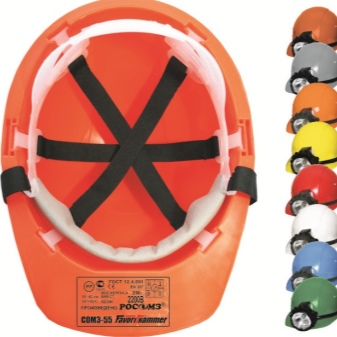

Dimensions (edit)
When working on a construction or industrial site, there is a possibility that various objects fall from a height or other unpleasant influences. To ensure the safety of the human head, special products have been created.
In order for a protective headgear not only to prevent the occurrence of injuries, but also not to cause discomfort during operation, it is necessary to determine the size. To do this, you need to measure the head in the most voluminous place.
Manufacturers produce safety helmets in two sizes:
- for head coverage from 54 to 58 cm;
- the second size is from 58 to 62 cm.
All sizes can be found in the table, which is in a special GOST. Additionally, the design provides for adjusting bands, the adjustment steps of which are up to 10 mm long.
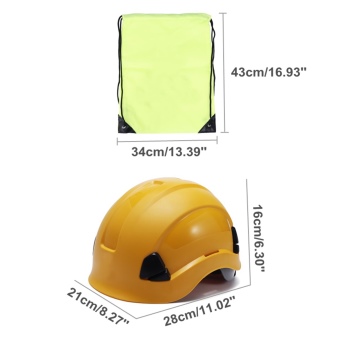
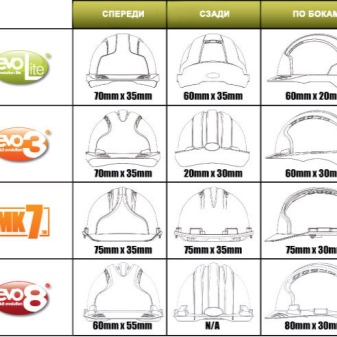
Shelf life
The indicator of the shelf life and operation of the product depends on the requirements of norms and state standards. So, for example, a helmet according to GOST 12.4.087-84 is available for use within 2 years from the date of manufacture.
It should be noted right away that even with proper storage in a warehouse, the shelf life of PPE is reduced. This is explained by the loss of material properties.
Basic storage times according to GOST:
- 3 years when used outdoors;
- 3.5 years in moderate temperatures;
- 4 years in metallurgical production.
If the helmet is exposed to chemicals, it should be replaced immediately. Fiberglass helmets can be used for 3 or more years. Synthetic constructions should be disposed of after 5 years of use.
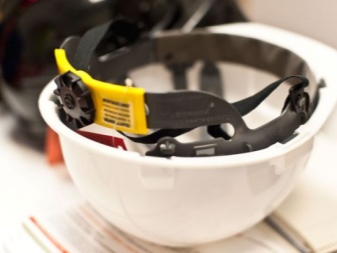
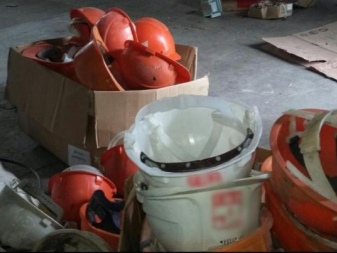
Popular models
Today, the personal protective equipment market is represented by a large selection of helmets from different manufacturers. To make it easier to choose a reliable headdress, a rating of popular models was compiled.
Helmet Uvex "Airving" B-WR, Uvex
Imported helmet in demand in Russia. It is popular for its representative appearance and reliable performance. High density polyethylene is used as a material for the body. Equipped with a long visor and an elongated occipital region for protection.
The headdress is produced in 6 colors. Additionally, adapters are provided with which you can use shields and headphones from any manufacturer. The shelf life is 5 years. The advantages of a helmet:
- high performance characteristics;
- the presence of an adjustment mechanism;
- light weight;
- ventilation system.
The product is certified according to TR.
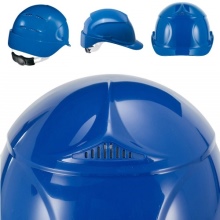
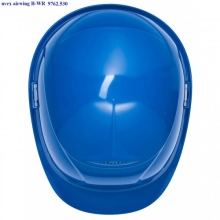
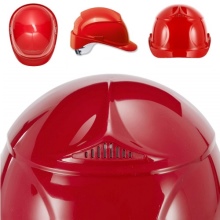
Helmet Uvex "Feos" B-WR, Uvex
A distinctive feature is the unique sporty design. The headpiece was first released in 2012. It is made of high density polyethylene and is available in 6 colors. The shelf life of the product is 5 years.
Advantages:
- preservation of protective properties;
- the ability to mount a miner's lantern;
- light weight.
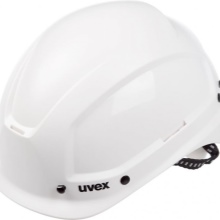
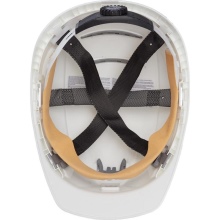
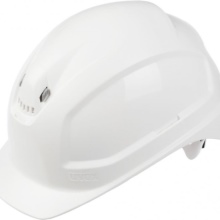
The ventilation system used is UVEX "Klimazon", developed as a result of long-term studies using computer modeling. The helmet has 3 ventilation holes. A certain angle of their placement allows to achieve optimal air movement under the helmet, ensuring wearing comfort.
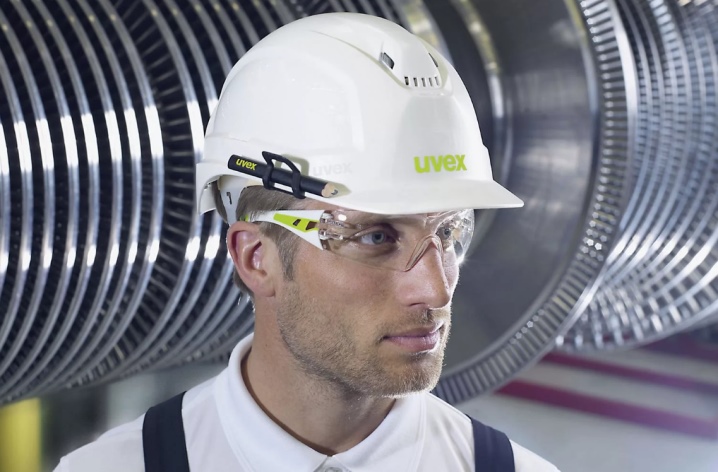
Helmet RFI-3 Biot ™ Rapid, COMZ
Manufactured in Russia. Differs in ergonomic design and compact size. The body is made of polypropylene. This material was developed by the SOMZ plant. The main advantage is the large operating temperature range.
The helmet perfectly protects the head from:
- falling objects;
- lateral deformation;
- splashing hazardous liquids and molten metals.
Also, the headgear saves from electric shock. The unique properties of the product include:
- UV indicators showing helmet aging;
- the ability to hold a side impact;
- the possibility of using it complete with a welder's shield.
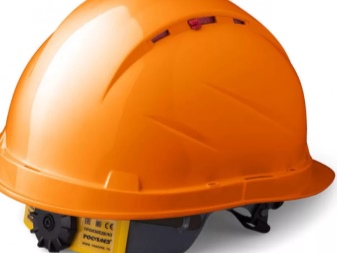
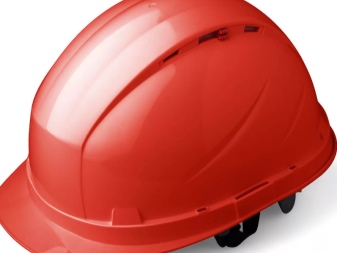
The product has a certificate of compliance with the requirements established by state standards.
Helmet RFI-7 Titan Rapid, SOMZ
The headdress is produced at Russian factories. Polypropylene is used as the material. The release is carried out in 7 colors. The headgear model has an adjustable headband. It also has 6 attachment points and a ratchet adjustment mechanism.
The helmet is additionally equipped with a holder, making it possible to simultaneously wear a headgear with closed goggles. Product advantages:
- protection against electric shock;
- light weight;
- the presence of UV indicators;
- increased protection of the back of the head.
The helmet body is made of a unique material. Also, the manufacturer has provided a special space to provide improved ventilation.

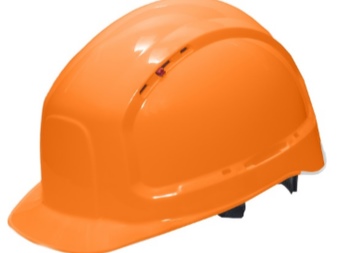
Helmet SOMZ-55 "Vision" ®, SOMZ
Popular model that protects the head from mechanical damage, splashes, moisture and sparks. Also prevents the possibility of electric shock. The helmet is made of polypropylene and comes in 7 colors.
The design of the headgear provides for 3 steps of adjustment of the wearing height. Product advantages:
- preservation of protective properties in harsh operating conditions;
- the presence of ventilation adjustable openings;
- light weight;
- shortened visor.
The latter allows you to use the product when carrying out work at height.

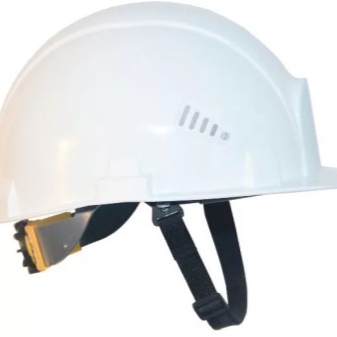
How to choose?
Dozens of companies are engaged in the production of protective helmets in Russia. Therefore, it is not always possible to immediately choose a suitable headdress or decide on a model. When choosing a helmet, it is recommended to pay attention to the following nuances:
- quality of performance;
- protective properties;
- additional functions;
- comfort.
Taking these parameters into account will help you choose a reliable helmet and protect its owner. You should also pay attention to the logo and the inscription.

How to care?
The operation of construction helmets must be carried out in accordance with the requirements established by the standards.
- The headgear cannot be repaired.
- Before starting to work in harsh conditions, you should carefully inspect the hat for deformations or various damage. If any are found, the product must be replaced.
- In case of damage to the inner lining or hull, the helmet must be replaced with a new one.
- The product must undergo regular sanitization after wearing. It involves immersing the helmet in a 3% bleach solution for half an hour or an hour. After that, the helmet should be thoroughly rinsed with cold water, wiped and dried naturally.
A safety helmet is a popular item at a construction site or factory. With its help, it is possible to increase the safe stay of employees at the work facility and improve their performance.
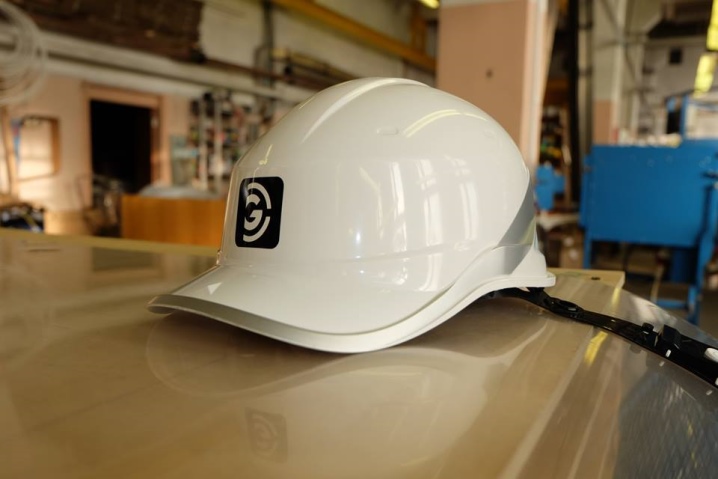
See how the helmet test goes below.








The comment was sent successfully.